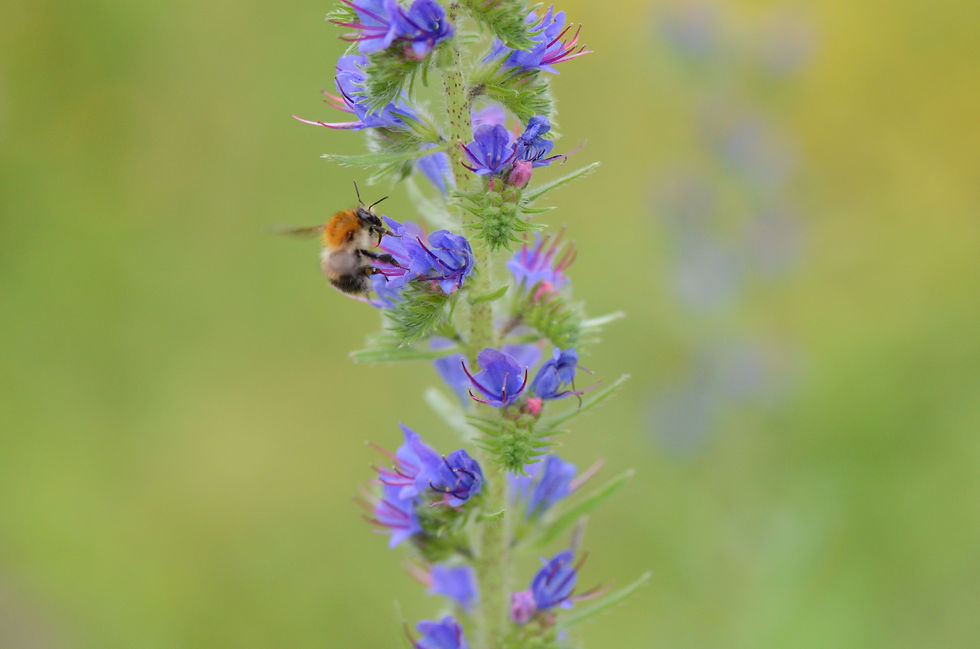How to Attract Pollinators to Your Garden
- Jordi Vives

- Mar 20
- 2 min read
some effective strategies to create a pollinator-friendly environment:
1. Choose the Right Plants
Native Plants: Select native flowering plants that are adapted to your local climate and soil conditions.
Diverse Blooms: Plant a variety of flowers that bloom at different times throughout the growing season to provide a continuous food source.
Color Variety: Include a mix of colors, as different pollinators are attracted to different hues.
2. Create a Habitat
Nesting Sites: Provide natural nesting sites such as brush piles, bare soil, and hollow stems for solitary bees.
Water Sources: Include shallow water sources, like birdbaths or small ponds, for pollinators to drink from.
Sunny Spots: Ensure there are sunny areas in your garden where pollinators can warm up.
3. Avoid Pesticides
Natural Pest Control: Use organic methods for pest control to avoid harming pollinators.
Timing: If pesticides are necessary, apply them in the evening when pollinators are less active.
4. Provide Shelter
Dense Foliage: Plant shrubs and other dense plants to provide shelter from predators and harsh weather.
Bee Hotels: Install bee hotels to attract solitary bees that need a place to nest.
5. Educate and Engage
Community Involvement: Share your knowledge about pollinators with neighbors and encourage them to create pollinator-friendly spaces.
Workshops: Attend or host workshops on gardening for pollinators.
By implementing these strategies, you can create a vibrant garden that attracts and supports pollinators, contributing to a healthier ecosystem.
How to Attract Pollinators to Your Garden
Attracting pollinators to your garden is essential for promoting biodiversity and ensuring the health of your plants. Here are several effective strategies to create a pollinator-friendly environment:
1. Choose the Right Plants
Opt for native plants that are well-suited to your local climate and soil.
Include a variety of flowering plants that bloom at different times throughout the growing season.
Incorporate plants with different colors, shapes, and sizes to attract a diverse range of pollinators.
2. Provide Shelter

Create habitats such as bee hotels, brush piles, or rock piles for solitary bees and other insects.
Plant dense shrubs and perennials that offer protection from wind and rain.
3. Avoid Pesticides
Minimize or eliminate the use of chemical pesticides that can harm pollinators.
Consider using organic pest control methods to protect your plants.
4. Create Water Sources
Provide shallow water sources, like birdbaths or small dishes, for pollinators to drink from.
Add stones or pebbles to create landing spots for insects.
5. Plant in Clusters
Group plants of the same species together to create a more visible and attractive target for pollinators.
Clusters make it easier for pollinators to gather nectar and pollen efficiently.
6. Educate Others
Share your knowledge about the importance of pollinators with friends and family.
Encourage others to create pollinator-friendly gardens in their own spaces.
By following these tips, you can create a vibrant garden that supports pollinators and enhances the overall ecosystem.




Comments